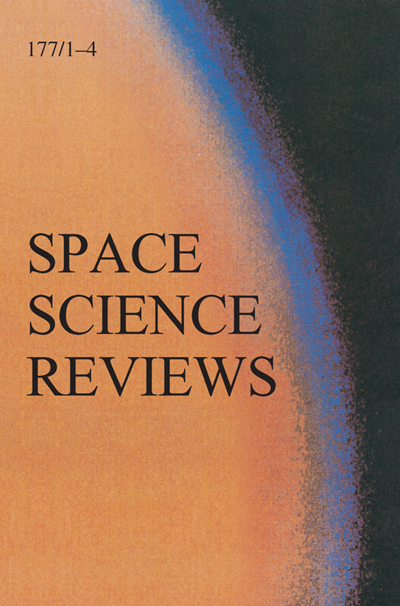Extreme Solar Events: Setting up a Paradigm
IF 7.4
2区 物理与天体物理
Q1 ASTRONOMY & ASTROPHYSICS
引用次数: 0
Abstract
Abstract The Sun is magnetically active and often produces eruptive events on different energetic and temporal scales. Until recently, the upper limit of such events was unknown and believed to be roughly represented by direct instrumental observations. However, two types of extreme events were discovered recently: extreme solar energetic particle events on the multi-millennial time scale and super-flares on sun-like stars. Both discoveries imply that the Sun might rarely produce events, called extreme solar events (ESE), whose energy could be orders of magnitude greater than anything we have observed during recent decades. During the years following these discoveries, great progress has been achieved in collecting observational evidence, uncovering new events, making statistical analyses, and developing theoretical modelling. The ESE paradigm lives and is being developed. On the other hand, many outstanding questions still remain open and new ones emerge. Here we present an overview of the current state of the art and the forming paradigm of ESE from different points of view: solar physics, stellar–solar projections, cosmogenic-isotope data, modelling, historical data, as well as terrestrial, technological and societal effects of ESEs. Special focus is paid to open questions and further developments. This review is based on the joint work of the International Space Science Institute (ISSI) team #510 (2020–2022).极端太阳事件:建立一个范例
太阳的磁场非常活跃,经常在不同的能量和时间尺度上产生喷发事件。直到最近,这类事件的上限还不为人所知,人们认为直接的仪器观测可以粗略地表示出来。然而,最近发现了两种极端事件:数千年时间尺度上的极端太阳高能粒子事件和类太阳恒星上的超级耀斑。这两项发现都表明,太阳可能很少产生所谓的极端太阳事件(ESE),其能量可能比我们近几十年来观测到的任何事件都要大几个数量级。在这些发现之后的几年里,在收集观测证据、发现新事件、进行统计分析和发展理论模型方面取得了巨大进展。ESE范式仍然存在并正在发展中。另一方面,许多尚未解决的问题仍未解决,新的问题也不断出现。在这里,我们从不同的角度概述了ESE的现状和形成范式:太阳物理学、恒星-太阳投影、宇宙成因-同位素数据、建模、历史数据,以及ESE对地球、技术和社会的影响。特别关注悬而未决的问题和进一步的发展。本综述基于国际空间科学研究所(ISSI) 510号团队(2020-2022)的联合工作。
本文章由计算机程序翻译,如有差异,请以英文原文为准。
求助全文
约1分钟内获得全文
求助全文
来源期刊

Space Science Reviews
地学天文-天文与天体物理
CiteScore
19.70
自引率
3.90%
发文量
60
审稿时长
4-8 weeks
期刊介绍:
Space Science Reviews (SSRv) stands as an international journal dedicated to scientific space research, offering a contemporary synthesis across various branches of space exploration. Emphasizing scientific outcomes and instruments, SSRv spans astrophysics, physics of planetary systems, solar physics, and the physics of magnetospheres & interplanetary matter.
Beyond Topical Collections and invited Review Articles, Space Science Reviews welcomes unsolicited Review Articles and Special Communications. The latter encompass papers related to a prior topical volume/collection, report-type papers, or timely contributions addressing a robust combination of space science and technology. These papers succinctly summarize both the science and technology aspects of instruments or missions in a single publication.
 求助内容:
求助内容: 应助结果提醒方式:
应助结果提醒方式:


